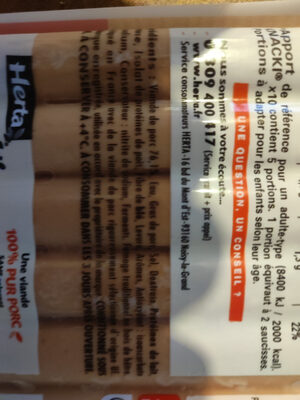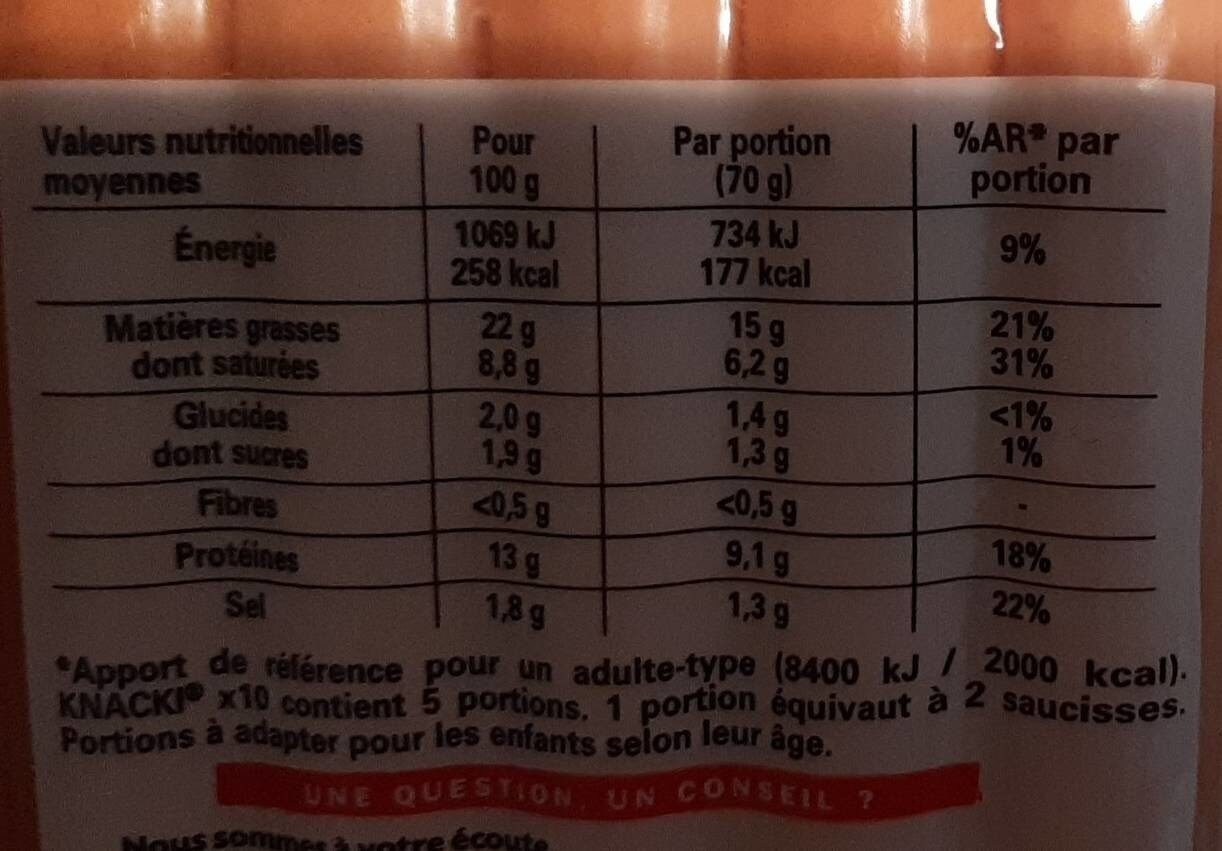Knacki 100% pur porc - Herta - 350 g
This product page is not complete. You can help to complete it by editing it and adding more data from the photos we have, or by taking more photos using the app for Android or iPhone/iPad. Thank you!
×
Barcode: 3154230801368 (EAN / EAN-13)
Quantity: 350 g
Brands: Herta
Categories: Meats and their products, Frozen foods, Meats, Prepared meats, Sausages, French sausages, Strasbourg sausages, Industrial knacks
Labels, certifications, awards: Nutriscore, Nutriscore Grade D
Countries where sold: France
Matching with your preferences
Environment
Carbon footprint
Packaging
Transportation
Report a problem
Data sources
Product added on by kiliweb
Last edit of product page on by ben-12.
Product page also edited by lsaudon, openfoodfacts-contributors, quechoisir, roboto-app, roto, yuka.sY2b0xO6T85zoF3NwEKvlmcbYuX_ny3gFULWwx2N3tTTd5zCbexoz6H_Mag, yuka.sY2b0xO6T85zoF3NwEKvlnxBWPDMpRXOKyH5vHSG2PWwL7nzRtJZ6InbEqs.










